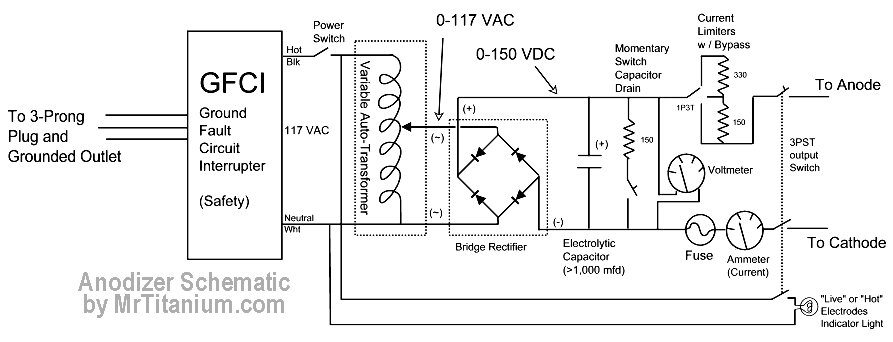zaph1
Junior Member level 1
- Joined
- May 28, 2010
- Messages
- 19
- Helped
- 3
- Reputation
- 6
- Reaction score
- 0
- Trophy points
- 1,281
- Location
- Altoona, Iowa
- Activity points
- 1,422

I'm working with the above schematic to make a variable DC voltage power supply. I want to add a couple voltage regulators to provide 12vdc for a cooling fan and 5vdc for the 4 digit display I have. My understanding is that I can use the +/- signals from the rectifier to input to the regulators. However, I need a ground. Where do I get the ground from? Green wire from the AC input? Or, is the ground for DC different than ground for AC?
